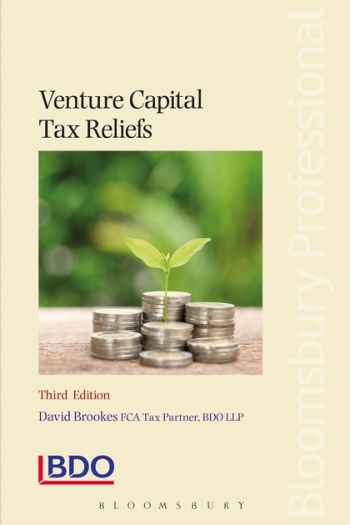We are now closed for the Christmas and New Year period, returning on Monday 5th January 2026. Orders placed during this time will be processed upon our return on 5th January.

Venture Capital Tax Reliefs, Third Edition provides an overview of the major investment schemes effecting capital tax reliefs including the Enterprise Investment Scheme (EIS), Seed Enterprise Investment Scheme (SEIS) and Venture Capital Trusts (VCTs).
It gives an overview of the schemes, outlines the investment reliefs available and how they work, as well as the qualifying conditions which must be met by investors.
As well as qualifying for the reliefs, it also guides the reader through the process of reducing or withdrawing from the reliefs, as well as advising how to defer reliefs or dispose of the investment.
There have been several major changes since the last edition in 2011, particularly due to changes imposed on the schemes by EU State aid regulations.
The third edition covers the introduction of the Seed Enterprise Investment Scheme (SEIS). Initially this was brought in as a temporary scheme in 2012 but was made permanent in 2014. SEIS is very popular particularly with new companies, which are often advised by the type of smaller accountancy firm that this book will appeal too. SEIS will be covered in detail as its absence is now a major omission - and the Corporate Venturing Scheme (CVS) needs to be removed as it ended in 2010.
Also includes the following changes:
In 2012, the size thresholds were relaxed. Employee test increased from “fewer than 50” to “fewer than 250”, gross assets increased from £8m to £16m and the annual investment limit increased from £2m to £5m.
2012 saw the introduction of a new “disqualifying arrangements” test. There were changes so that Venture Capital Trusts (VCTs) could invest more than £1m per company and EIS/VCT funds could no longer be used to acquire shares in another company.
In 2013, after being introduced, SEIS was extended and it was confirmed that the restrictions on loss relief would not apply to losses on SEIS and EIS shares. In 2014 SEIS was made permanent.
There were further restrictions on trades involving the subsidised generation of electricity and heat.
New legislation which came into effect in November 2015 following EU State aid changes fundamentally changed the way the schemes operate and includes: